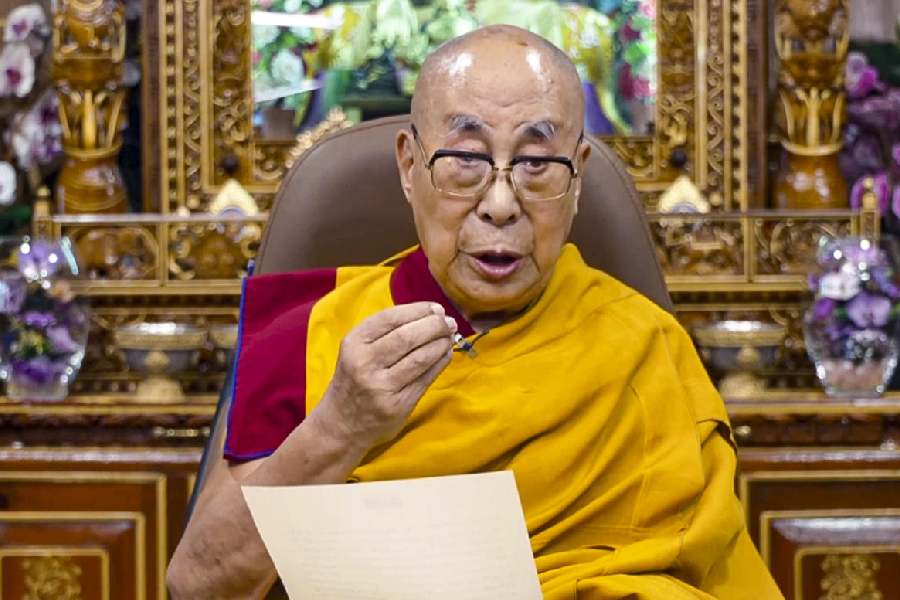|
|
| While it was still spring |
John Gielgud: The Authorized Biography
By Sheridan Morley,
Simon &Schuster, $ 30
John Gielgud or Laurence Olivier? The debate about who was the greater actor will continue to rage among theatre lovers . One contemporary remarked that Gielgud was the best actor neck upwards, Olivier, the best actor neck downwards.
Gielgud indirectly recognized this once in conversation with the legendary Indian actor, Shombhu Mitra. Discussing Olivier?s enacting of the death scene in Coriolanus, Gielgud said, ?When Larry wants to die on stage he performs two cartwheels and then dies. When I die on stage I go quietly to one corner.??
The physical side of acting was never John G?s strongest point. But who remembered that while listening to the unsurpassed voice which his fellow actor and friend, Alec Guinness, memorably described as ?a silver trumpet muffled in silk?.
John G?s provenance was theatrical. His great-aunt on his mother?s side was Ellen Terry. He was thus a part of what was reckoned in the early 20th century to be ?the royal family of the British theatre.? As Gielgud was to remark to his biographer, with such a lineage ?you are hardly likely to drift into the fish trade?.
Sheridan Morley?s credentials to write the authorized biography of Gielgud are also impeccable. His grandmother, Gladys Cooper, had been directed by John G, as had been his father, Robert. His mother, Joan, had been a family friend. But he was not the first choice to write the authorized biography. The first choice was Richard Findlater, the arts editor of The Observer who died. It was then that Sheridan Morley, biographer of Noel Coward, David Niven, Robert Morley and Gladys Cooper, was thought of as a replacement.
Morley?s approach to John G?s biography is the simple chronological one. He takes his readers through Gielgud?s absolutely undistinguished early life and career, when most people, including Gielgud himself, wondered if he would ever make it as an actor. Morley then proceeds production- by-production and goes through the main developments in his subject?s private life.
The critical problem in writing the biography of an actor of Gielgud?s stature is the one of recapturing his presence on stage, the quality of his voice and his skills as an actor when he was not actually saying anything. For a stage actor of the pre-video era, these are always elusive. Morley tries to get around this problem, not entirely successfully, by quoting from reviews by critics and from the comments of co-actors.
The other problem that Morley faced pertained to Gielgud?s sexuality. He was gay, like many other actors of his time, even though he had never quite come out. There was also that disastrous incident in 1953, a few months after he had become Sir John, when he had been convicted for soliciting. Gielgud wanted the incident to remain under wraps, but his death allowed Morley to write about Gielgud openly and with a great deal of sensitivity.
Morley describes a life fully and enjoyably lived. It was also lived, for the most part, with a great deal of dignity. He died, in real life as on stage, by quietly collapsing on a chair while the sun still shone and it was still spring.











